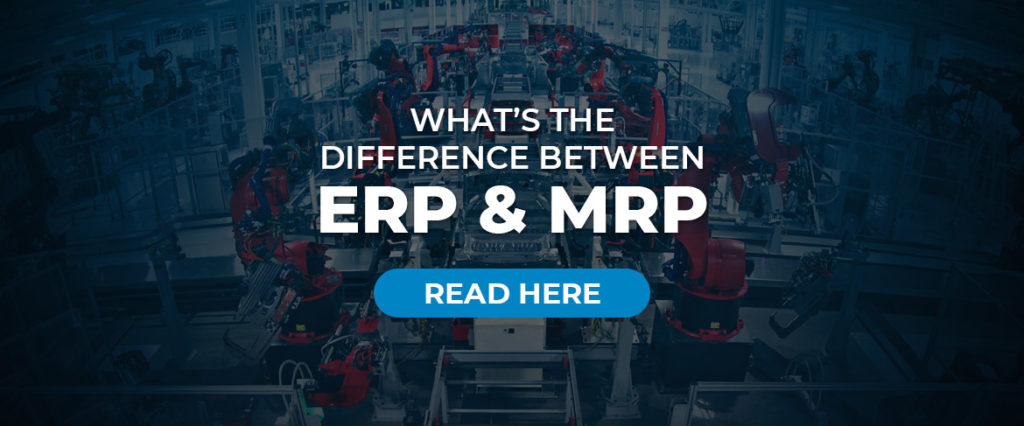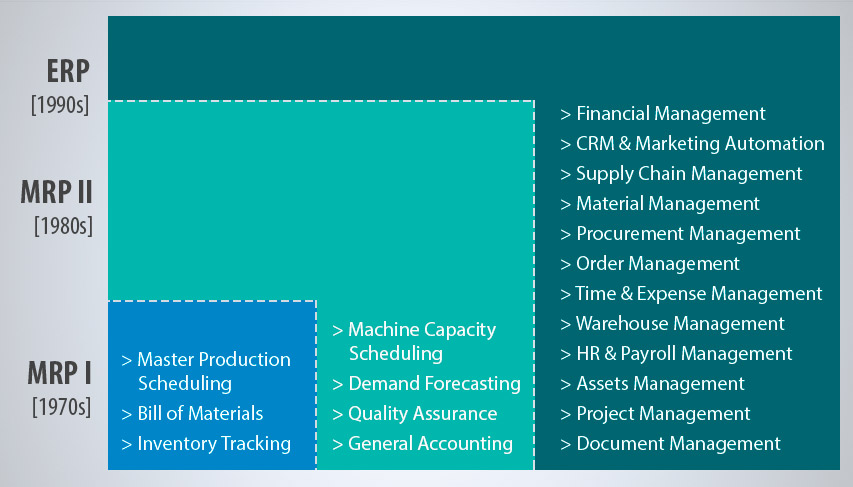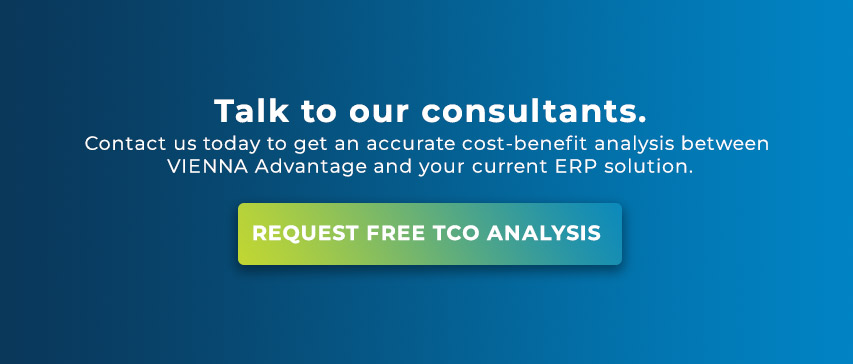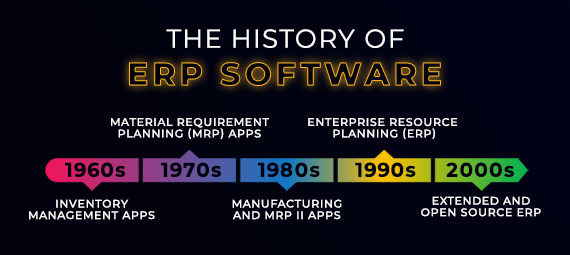It is impossible for anyone in the industry these days to have not heard the phrase “digital transformation”, which is often used in correlation with “ERP software”. But, did you know that the history of ERP software and the original digital transformation date back to the late 1960s? It was during this period that mainframe computers were rapidly entering commercialization. Around the same time, manufacturing firms were organizing themselves along with more formal methods for planning for materials and resources. This was the trigger for the first digital revolution and the genesis of ERP applications.
Before we dive deeper in the history of ERP software solutions, let us quickly answer a question that might popped up in some of our readers minds.
What does ERP software stands for?
Enterprise resource planning (ERP) refers to a type of software that organizations use to manage day-to-day business activities such as finance, HR, project management, manufacturing, procurement, inventory and supply chain operations and others. It is an integrated system that tie together all these business processes and enables the flow of data between them.
Today’s ERP software solutions are way more advanced compared to the ERP of decades ago. They are now delivered via the cloud and use the latest technologies such as machine learning (ML) and artificial intelligence (AI). Today’s cloud ERP solutions are able to connect internal operations with business partners around the world, giving companies the collaboration, agility, and speed they need to survive in this everchanging business environment.
But it was not always like that! Lets go back decades ago where it all started!
The history of ERP software: The 1960s – 1970s
The first version of ERP was much simpler than the sophisticated version of the application in the market today. It was essentially a standalone inventory management solution that ensured manufacturers did not run out of critical raw material and that they could adopt advanced material replenishment strategies.
With growing computing power, these inventory management applications gave rise to relatively more complex Material Requirements Planning (MRP) applications. In this phase, businesses could use advanced software applications for scheduling manufacturing processes in addition to traditional inventory management functions.

Because these MRP solutions ran complex scheduling applications, their adoption was tightly linked to the increase in computing power over time.
The history of ERP software: The 1980s – 1990s
The manufacturing industry also had a large influence in driving the capabilities of such applications. With a manufacturing-centric history of MRP, gradually additional features were added to the erstwhile MRP application. These additional capabilities included manufacturing control and advanced scheduling functions such as product planning, spare parts purchase, and outbound and inbound materials movement. This new generation of applications was called Manufacturing Resource Planning (MRP II) and witnessed widespread adoption in the manufacturing sector during the 1980s.

As businesses saw increased efficiency and better processes in their manufacturing departments, MRP II solution providers expanded to provide similar solutions for other functions within the organization. This led to the emergence of holistic applications that, in addition to manufacturing processes, catered to other business processes across sales and distributions, procurement, human resource management, service management, marketing, customer relationship management, and asset management.
In the 1990s, this category of applications was formally christened as Enterprise Resource Planning (ERP) by The Gartner Group and this went a long way in popularizing the class of applications among large enterprises. These conglomerates saw incredible benefits in rationalizing their overall business processes and making their business operationally more efficient by implementing ERP applications. Because of the high upfront costs involved in implementing these solutions, several businesses could not justify the scale of investment and generally opted out from implementing ERP applications because of the high total cost of ownership (TCO) that included cost elements such as licenses, implementation effort, hardware, and ongoing maintenance.
The rise of open source ERP: The 2000s and onwards
There was a clear opportunity in the market for ERP applications that offered a lower total cost of ownership to companies and this period saw the emergence of open source ERP applications. But, what exactly qualifies for an open source ERP? Firstly, an open source ERP is built on open technologies and frameworks that eliminate dependence on any proprietary technology. Secondly, because open source applications are built on non-proprietary technologies, they attract a large community of developers that contribute to the foundational layer of the product, making it richer in functionality and more secure operationally.
The key reason behind the rise in popularity of open source ERP applications was the dramatically lower total cost of ownership. Right from the license fee to the ease and flexibility of implementation, open source ERP applications are less expensive to their peers that are built on proprietary technologies. Moreover, maintenance or enhancement of proprietary ERP applications is much more expensive because of the specialized skills that are needed to carry out these activities. On the other hand, open source ERP applications are built on open technologies, and resources needed to maintain or extend the standard application are more freely available and consequently, less expensive.
Enterprise open source ERP
VIENNA Advantage ERP is an enterprise level open source ERP application. The solution is built using open technologies, and backed by enterprise-grade support to ensure that customers are able to run mission-critical processes on VIENNA Advantage ERP.
In addition to being built on open technologies, the VIENNA Advantage ERP uses a flexible application development framework, which is a platform enabling low-code application development. With the help of the framework, VIENNA Advantage’s customers are able to implement enhancements and extensions to the standard product very easily and in many short timeframes than they would need for comparable ERP applications.
Reduced implementation timeframes lead to cost rationalization on implementation services, which reduces the overall Total Cost of Ownership of the solution. VIENNA Advantage also offers several industry solutions in collaboration with its partners, which allows companies operating in these specific industries to operate several businesses on a single digital core.
Organizations are rapidly embracing open source technologies because of the tremendous returns on open source IT investments. VIENNA Advantage has pioneered the open source philosophy and has built a formidable suite of ERP applications and modules that matches its contemporaries in capability and is far ahead of them on the total cost of ownership.




